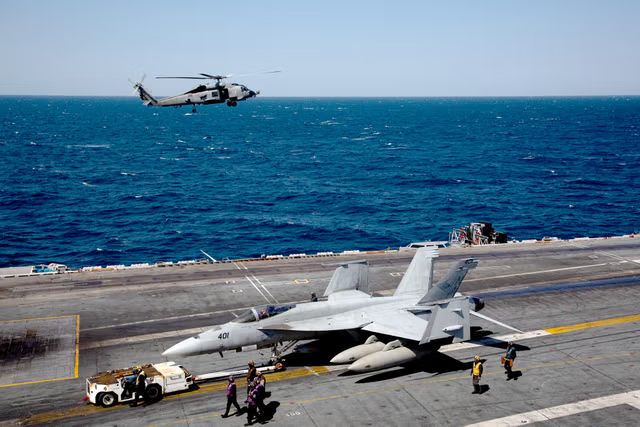Two U.S. Navy Aircraft Crash Within 30 Minutes Over the South China Sea

In a highly unusual series of events, two U.S. Navy aircraft crashed in the South China Sea within half an hour of each other, according to a statement from the U.S. Pacific Fleet. Fortunately, all five crew members involved were rescued safely.
The twin crashes occurred during routine operations over disputed waters claimed by China. Both aircraft were operating from the USS Nimitz, the Navy’s oldest active aircraft carrier, which was returning home after a summer deployment in the Middle East.
President Donald Trump, speaking aboard Air Force One en route from Malaysia to Japan, called the back-to-back crashes “very unusual.” He suggested a possible fuel contamination issue, adding, “They think it might be bad fuel. We’re going to find out. Nothing to hide.”
According to reports, the first crash involved a MH-60R Sea Hawk helicopter, which went down around 2:45 p.m. local time Sunday. The aircraft, assigned to the “Battle Cats” of Helicopter Maritime Strike Squadron 73, was recovered shortly after the incident with all three crew members safe.
Just 30 minutes later, an F/A-18 Super Hornet fighter jet, valued at $60 million, also went down while conducting operations from the same carrier. The two pilots successfully ejected and were recovered by rescue teams. The Super Hornet belonged to the “Fighting Redcocks” of Strike Fighter Squadron 22.
The Chinese Foreign Ministry said it was willing to assist in search and recovery efforts “from a humanitarian perspective” if requested by the U.S. However, spokesperson Guo Jiakun criticized U.S. military operations in the region, accusing Washington of “provoking instability” and “increasing the risks to maritime safety.”
The U.S. Pacific Fleet, the Navy’s largest operational command, confirmed all personnel are “safe and in stable condition,” and announced an official investigation into both incidents.
This marks the fourth F/A-18 crash reported by the U.S. Navy in 2025 alone, raising safety concerns about the aging fleet and operational conditions.
The USS Nimitz, commissioned in 1975, is scheduled for retirement in 2026 after more than five decades of service. The Nimitz-class carriers, among the largest warships in the world at nearly 1,100 feet long, are nuclear-powered and capable of operating for 20 years without refueling.
The crashes took place as President Trump continues his Asia tour, where he is set to meet several regional leaders, including China’s President Xi Jinping, amid ongoing tensions in the South China Sea.
These incidents highlight the growing risks of U.S. military operations in one of the world’s most geopolitically sensitive regions, where rival claims and naval exercises continue to test international diplomacy and safety.
- U.S._Navy
- South_China_Sea
- USS_Nimitz
- F/A-18_Super_Hornet
- MH-60R_Sea_Hawk
- Donald_Trump
- U.S._Pacific_Fleet
- Navy_aircraft_crash
- maritime_safety
- China-U.S._relations
- Xi_Jinping
- naval_operations
- military_news
- aircraft_carrier
- Nimitz-class
- Asia_tour
- defense_news
- aviation_incidents
- military_technology
- global_security
- Business
- Art
- Causes
- Crafts
- Dance
- Drinks
- Film
- Fitness
- Food
- Jocuri
- Gardening
- Health
- Home
- Literature
- Music
- Networking
- Alte
- Party
- Religion
- Shopping
- Sports
- Theater
- Wellness
- Technology
- Cryptocurrency
- Psychology
- Internet
- Ecommerce
- Family
- Others


